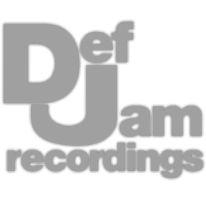Professional Analog Mastering.
Professional Analog Mastering.










When making your mix sound warm, try transformer or tube saturation to create a strong second-order harmonic - then amplify the lows with some upward compression and a low shelf. Optical compression may make the mix sound warmer as well, but be sure not to compress too heavily.
If you’re looking to make your mix warm sounding, let’s look at a chain that’ll work well - it includes 6 inserts, each of which will be used subtly. This chain is great for some finishing touches on your mix, before sending it off for mastering.
It starts with a Gullfoss EQ to ensure everything is balanced before amplifying the signal, then saturation, upward compression, and a low-frequency shelf. We’ll then cut and amplify some of the sides to make it a little cleaner and fuller on the side. Then it ends with some subtle parallel optical compression to smooth out the sound.
Let’s listen to the full chain.
The Gullfoss EQ will dynamically attenuate and boost frequencies to balance out the sound - it works well first since it levels out the frequency spectrum so that when we make it warm with the subsequent processing, it doesn’t become overbearing. Subtle settings work really well here, only about 10 percent.
Use the mastering version of this plugin to ensure the effect is only a couple of dB shifted at most.
A transformer-based saturator will be great for warming up your mix since it adds a strong second-order harmonic - which we can observe by running a sine wave through it. One great free option for this is MSaturator by Melda Audio, with which you can control harmonics easily.
We can either use the Soft Mode and increase the Analog slider or increase the value of the 2nd harmonic slider. Either way, you get a warmer mix.
Since this is on your mix bus, keep the amount low or use the wet/dry to blend it in.
With the FabFilter MB compressor, or with another multiband dynamics processor, we can isolate our low frequencies, use a positive range and compression settings to amplify the quietest aspects of the signal. This way the signal is amplified whenever it falls below the threshold.
This may increase the noise floor, but it shouldn’t be too noticeable.
Although this is really straightforward, a low shelf is a really powerful tool - we can use an analog emulator like a Pultec-based plugin to create a distinctive slope, or we can use a parametric EQ for more control. Either way, try not to amplify the section more than 2dB.
If the plugin you have lets you, make the band dynamic. Also, if the EQ is mid-side, place the shelf on the mid-channel.
If you have an EQ that lets you affect your mid and side separately, use a high pass filter on the side channel to make your lows more mono - this will keep the mix driving while we boost the side image. Then we’ll amplify around 300Hz.
This combo results in a clean and direct sound but definitely helps warm the mix.
Last up let’s use a compressor with a wet/dry effect and achieve about 1dB of attenuation while using automatic makeup gain. If we use the internal side-chain filter to remove highs from triggering the compressor, the compressor will trigger whenever the lows are loud enough.
The auto make-up gain will basically cause the lows to become denser without losing much impact. As a result, we get a warmer sound.
Let’s listen to each insert, enabled one by one.